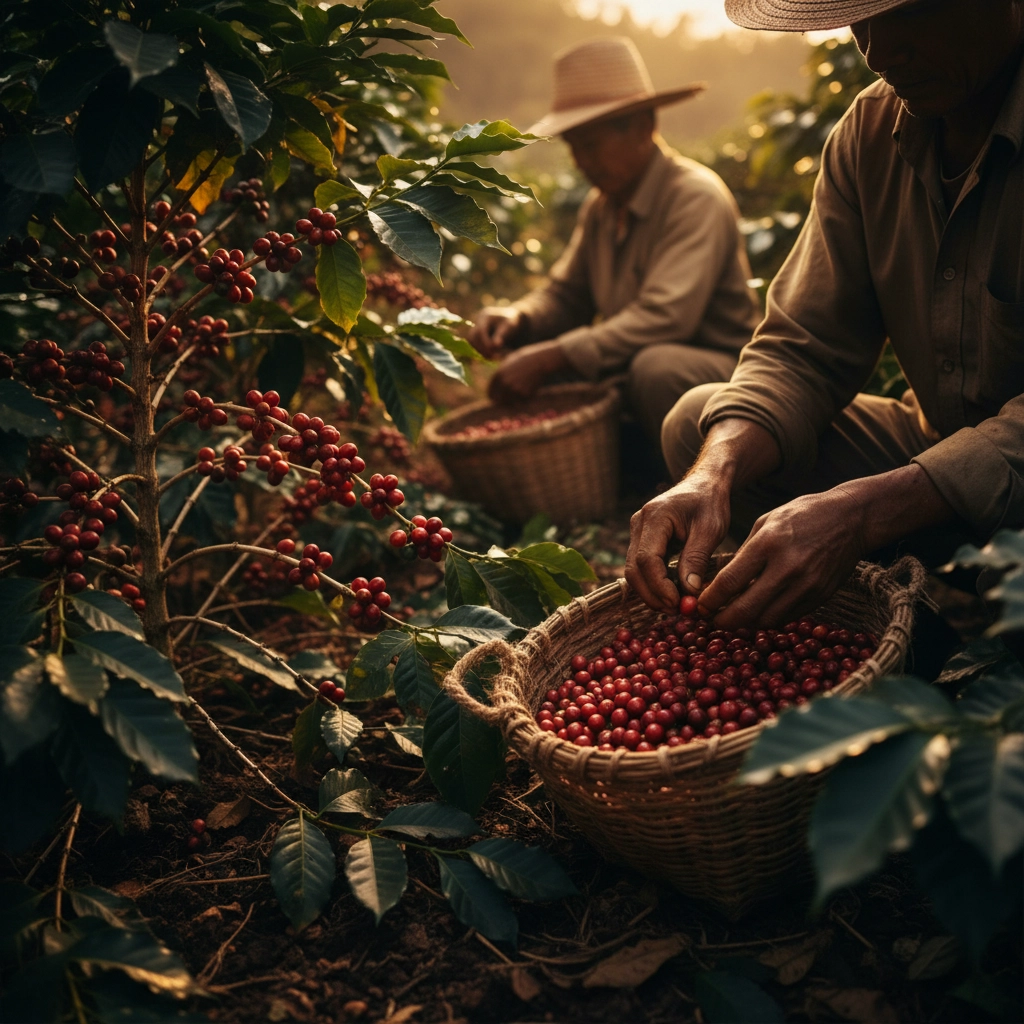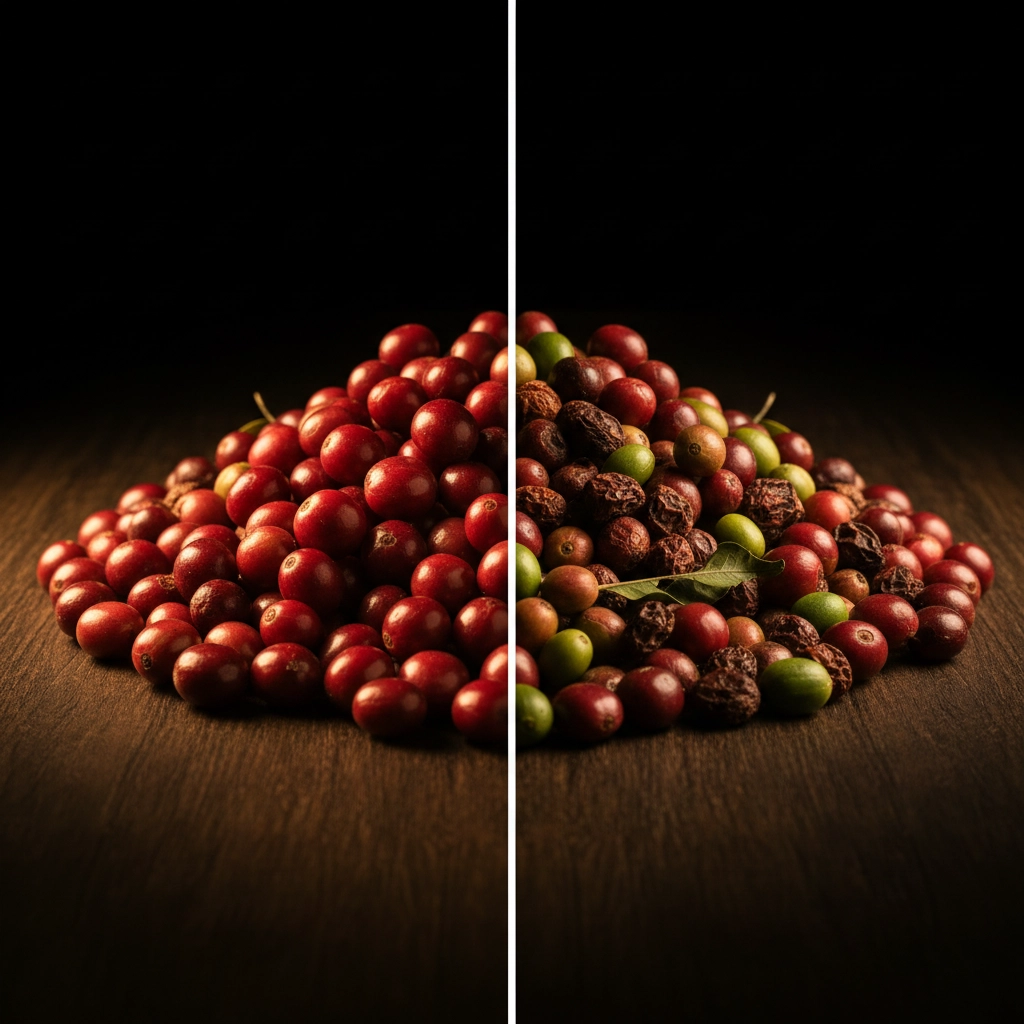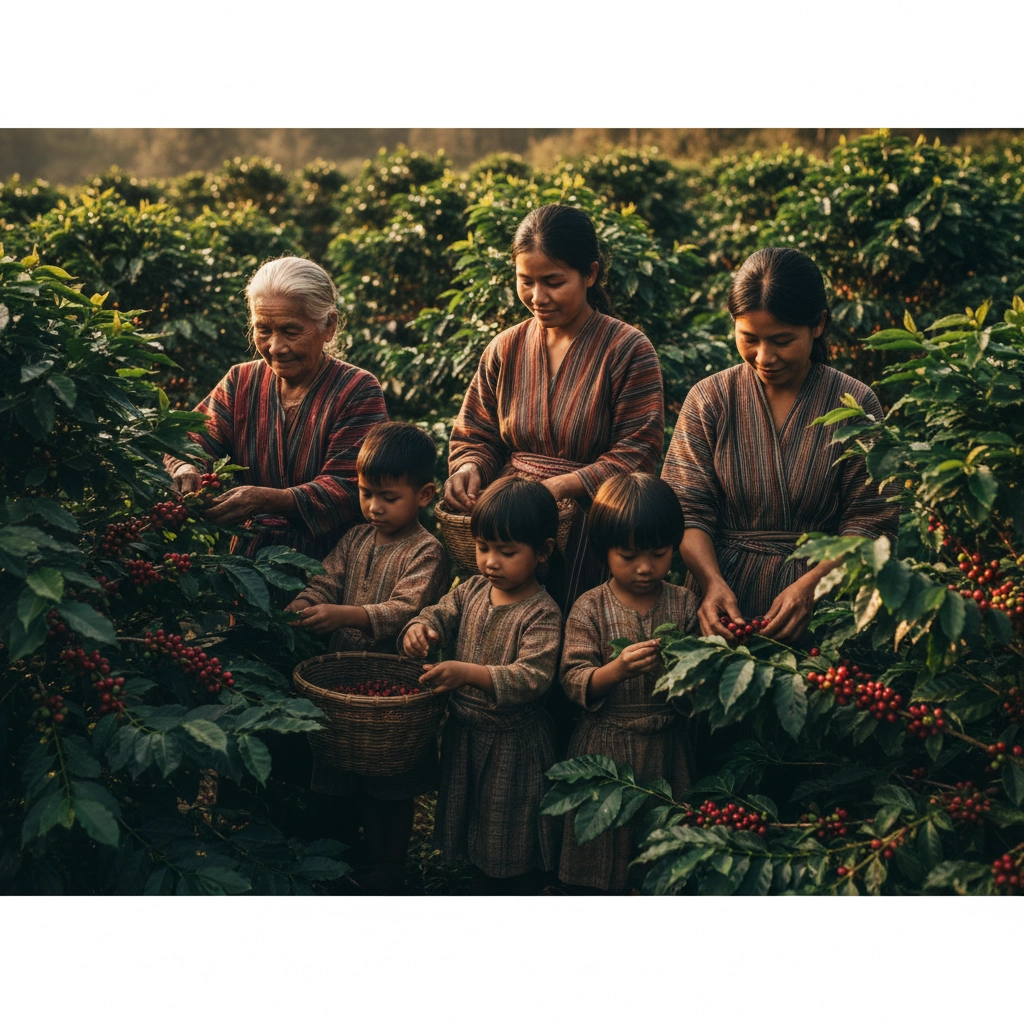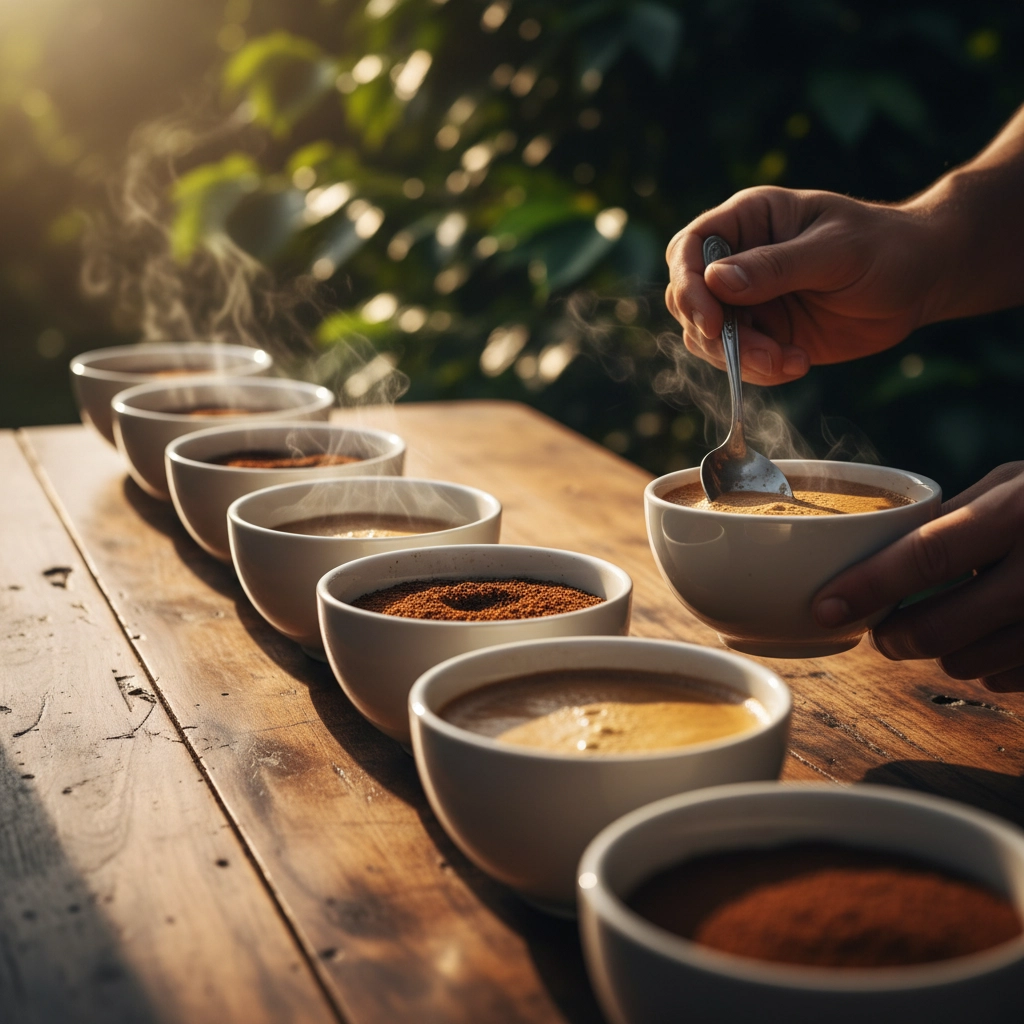As the leaves start changing colors and you're reaching for that cozy sweater, there's something magical happening in coffee farms around the world. Autumn isn't just pumpkin spice latte season, it's actually harvest time for some of the world's best coffee beans. While you're sipping on our Pumpkin Spice Coffee and getting into the fall spirit, coffee farmers in places like Hawaii, Kenya, and parts of Central America are working around the clock to bring you next year's perfect cup.
The Autumn Coffee Rush is Real
Picture this: you wake up at 5 AM, grab your basket, and head out to pick coffee cherries by hand under the crisp morning air. That's exactly what's happening right now in Kona, Hawaii, where September through November marks the peak coffee harvest season. And trust me, it's not a leisurely stroll through the farm, it's an all-hands-on-deck situation.
The timing couldn't be more perfect. Just as we're craving those warm, comforting flavors like our Holiday Blend Coffee, coffee farmers are harvesting the beans that will eventually become those very blends. It takes about six to nine months from when the coffee plant flowers to when those cherries are ready to pick, and autumn just happens to be when everything comes together in many regions.

It's All About Timing (And Mother Nature)
Here's where it gets interesting, coffee harvest season isn't the same everywhere. While Hawaii is in full swing during our fall months, Brazil's coffee harvest actually runs from May to September, and Kenya has two harvest seasons: October to December (their main crop) and May to July (called the "fly crop"). It's like a global relay race where someone, somewhere, is always harvesting coffee.
The timing depends on a bunch of factors like altitude, climate, and rainfall patterns. Coffee plants are surprisingly picky about when they want to ripen their cherries. They need just the right amount of rain during the growing season, followed by a dry period for harvesting. Too much rain during harvest and the cherries can split or develop unwanted flavors. Too little rain during growing season, and you don't get that full, complex flavor development we all love.
Hand-Picked vs. Machine-Picked: The Great Debate
Now here's where things get really hands-on. In places like Kona, every single coffee cherry is hand-picked. Yep, every one. That means workers go through the farms multiple times over several weeks, selecting only the perfectly ripe cherries. It's labor-intensive and expensive, but the quality difference is incredible.
Why does this matter for your morning cup? Well, when you're enjoying our Cinnamon Hazelnut Coffee, you want every bean to contribute its best flavors. Hand-picking ensures that unripe (green) or overripe (brown) cherries don't make it into the batch, which could add bitter or sour notes to your brew.

The alternative is strip-picking, where workers grab all the cherries off a branch at once, regardless of ripeness. It's faster and cheaper, but you end up with a mixed bag of quality. Some farms also use mechanical harvesters, especially on flatter terrain, but even then, the best coffee usually comes from the careful, selective approach.
The Processing Race Against Time
Once those cherries are picked, the clock starts ticking. Coffee cherries are basically fruit, and like any fruit, they start to deteriorate quickly. This is where the autumn processing season becomes a frantic, 24/7 operation.
There are two main ways to process coffee, and each gives you completely different flavors:
The Washed Process: The cherry pulp gets removed right away, and the beans are dried with just their protective parchment layer. This method tends to highlight the coffee's natural acidity and gives you those bright, clean flavors that make your taste buds wake up.
The Natural Process: The cherries are dried with all their fruit still attached, allowing the beans to absorb those fruity sugars. This creates sweeter, fuller-bodied coffees with more complex flavor notes.

During peak harvest season, processing facilities are handling double or even triple their normal workload. At larger operations, they're not just processing their own coffee: they're also buying and processing coffee from dozens of smaller local farms. Each batch gets its own number, gets raked every 30 minutes during daylight hours, and needs about 6-7 days of full sun to reach the perfect moisture level.
The Family Affair
Here's something that might surprise you: autumn coffee harvest is often a family affair. Friends who own small 5-8 acre coffee farms suddenly become frantic coordinators, getting their entire families involved in getting coffee off the trees before it deteriorates. Kids get out of school and start picking alongside parents and grandparents. It's like a caffeinated version of harvest festivals.
The urgency is real because coffee cherries have a narrow window of perfect ripeness. Miss that window, and months of careful cultivation can be ruined. That's why during autumn harvest season, coffee farming communities basically operate on coffee time: dawn to dusk, seven days a week, until every cherry is safely processed.
From Harvest to Your Cup
All this autumn intensity eventually makes its way to your coffee cup. Those hand-picked, carefully processed beans from this fall's harvest will show up in coffee shops and our online store throughout the next year. The meticulous attention during harvest season is what allows us to create those complex, seasonal blends you love.

When you're savoring our Caramel Flavored Coffee on a chilly autumn morning, you're tasting the result of countless hours of careful work during last year's harvest season. The smooth sweetness comes partly from the processing method, the complexity from the selective picking, and the consistency from the quality control that happens every single day during harvest.
Quality Control Never Sleeps
Throughout the autumn harvest season, quality control experts are constantly "cupping" (professional coffee tasting) new batches to ensure they meet standards and achieve the perfect roasting profile. This isn't just about making sure the coffee tastes good: it's about understanding exactly how each batch will behave when roasted, what flavors will develop, and how it might work in different blends.
This level of quality control during the harvest and processing phases is what allows us to consistently deliver the flavors you expect from our coffees, whether it's the bold richness of our Holiday Blend or the comforting spice notes in our seasonal offerings.

The Seasonal Connection
There's something poetic about enjoying autumn coffee flavors while actual coffee harvest is happening around the world. As you're bundling up for cooler weather and craving those warming spices and rich flavors, coffee farmers are working under sunny skies to harvest the beans that will fuel next year's cozy moments.
The next time you're enjoying your morning coffee this fall, take a moment to think about the incredible journey those beans took to get to your cup. From the careful timing of the harvest to the frantic processing season, from the selective picking to the meticulous drying process: every step of that autumn harvest season contributes to the complex, delicious coffee experience you're enjoying right now.
And honestly? That makes every sip taste just a little bit better.




